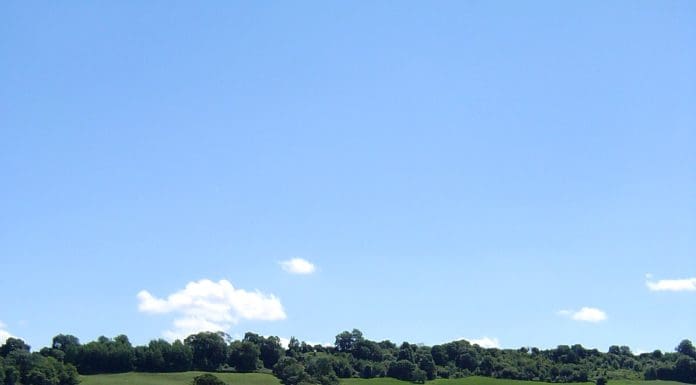
Ian Streets, managing director of About Access, explores the lessons to be learned from the comprehensive access policies at the Glastonbury Festival
Scottish pop star Lewis Capaldi grabbed the Glastonbury headlines as a singer who bounced back from the effects of Tourette’s Syndrome to thrill thousands of fans at this year’s festival, and there’s plenty of evidence of work going on in the background to help performers (some of them way past pension age!), crew and the crowd make the event as accessible as possible.
You might say that such an institution of the global entertainment calendar should have everything covered after 55 years, but there are many national treasures which are considerably older and still haven’t got the hang of things.
Carefully planned access policies
Accessibility doesn’t just happen. It’s planned well in advance, with facilities, amenities and policies developed over the years. Every site and location has features which make it unique, and some of these present challenges to disabled people.
Every site will also at some time or other encounter problems and complaints, but access policies are all about ironing out any issues that arise, making them easier to resolve in the present and less likely to reoccur in the future.
Capaldi is a good example of how increased awareness helped to change perceptions. At the 2023 festival, the BBC reported how the singer lost his voice and experienced pronounced tics resulting from Tourette’s Syndrome.
Some fans weren’t quite so understanding as the show was curtailed and other festival appearances cancelled, but they were all behind him on his return this year when he told fans: “The last two years haven’t been the best for me. It’s been difficult at times. This has been my goal: to get back here, doing this.”
Glastonbury’s accessibility programme
Much lower down the festival bill was Karl Flood, aka DJ Flood, who uses a wheelchair and was featured as part of Glastonbury’s accessibility programme, Levelling the Field, which aims to open up opportunities for people with different needs, accessibility issues or learning disabilities to help give them live festival experience in stage management, artist liaison and event production.
Behind the scenes, William Ogdem, who is profoundly deaf and visually impaired, was supported by Levelling the Field to work with the production team, making sure the sound and lights are safe.
The ranks of volunteers included Jacob Hare, who has less than 10% of his vision remaining but was able to work as a steward with the help of his mum.
All of this adds up to evidence that Glastonbury’s accessibility policies extend to customers, crew, performers and volunteers. A team of BSL interpreters offers a free service and induction/hearing loops are installed at key points around the site.
Sighted guides are available to aid people who are blind or visually impaired, and the festival recognises accredited guide dogs and assistance dogs that have been trained by a member of the International Guide Dog Federation or Assistance Dogs International. Electric and manual wheelchairs are available for hire, with charging points at various locations.
Sensory Calm Tents provide a safe, low-level stimulation and recalibration zone for neurodivergent festivalgoers.
Travel and accommodation are covered with accessible parking, a wheelchair shuttle bus and accessible camping, caravan and campervan spaces.
Among the facilities are wheelchair accessible and standard unisex toilets, plus wheelchair adapted showers for use by access customers only. There’s a Changing Places unit featuring a changing bed, toilet, sink and hoist, as well as accessible sinks and freshwater points, and a fridge for secure medication storage.
None of this will impress anybody if they can’t see the bands, so other features include ground-level viewing areas and raised platforms designated for people with access needs and staffed by trained access stewards.
It is important – essential, even – to book many of the accessible services in advance and the festival uses an access application system operated by Nimbus Disability.
And all involved are reminded of the main variables. The access information highlights the fact that the weather and terrain can differ from one area of the site to the next, and from one day to the next.
It notes that the festival takes place on 1,500 acres of farmland: “The main festival site is within a grassy valley, which does mean there are hills, and the terrain is uneven in places. There are a mixture of stone and gravel paths throughout the, site as well as some temporary trakways used to create temporary roads.
“It is important to remember that the weather can have a massive impact on the ground conditions. During inclement weather, some parts of the site may become muddy or waterlogged. In hot weather some parts of the site may also become dusty. The majority of the festival site is in the open air, so it is important that festival goers come prepared for all weather conditions.”
In preparing and providing all of this guidance, Glastonbury demonstrates the importance of assessing the journey disabled people face. It’s well worth reading whether you are addressing accessibility for a walk round an office building, a visit to a shopping centre, using public transport or navigating fields, tents and camper vans to see your favourite band.
Ian Streets advises public and private sector bodies and businesses on accessibility legislation, issues and best practice.
*Please note that this is a commercial profile.
The post Access seen as all-important for a smooth festival journey appeared first on Planning, Building & Construction Today.

